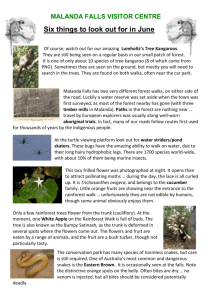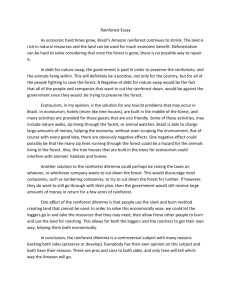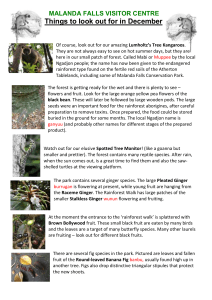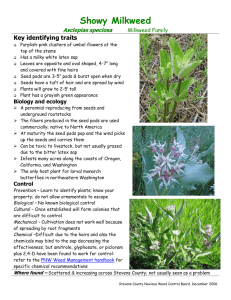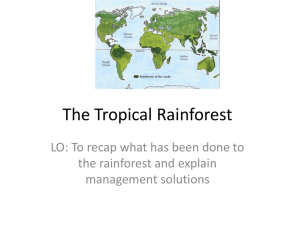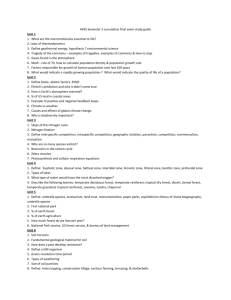Lumholtz`s tree kangaroos (mupee)
advertisement
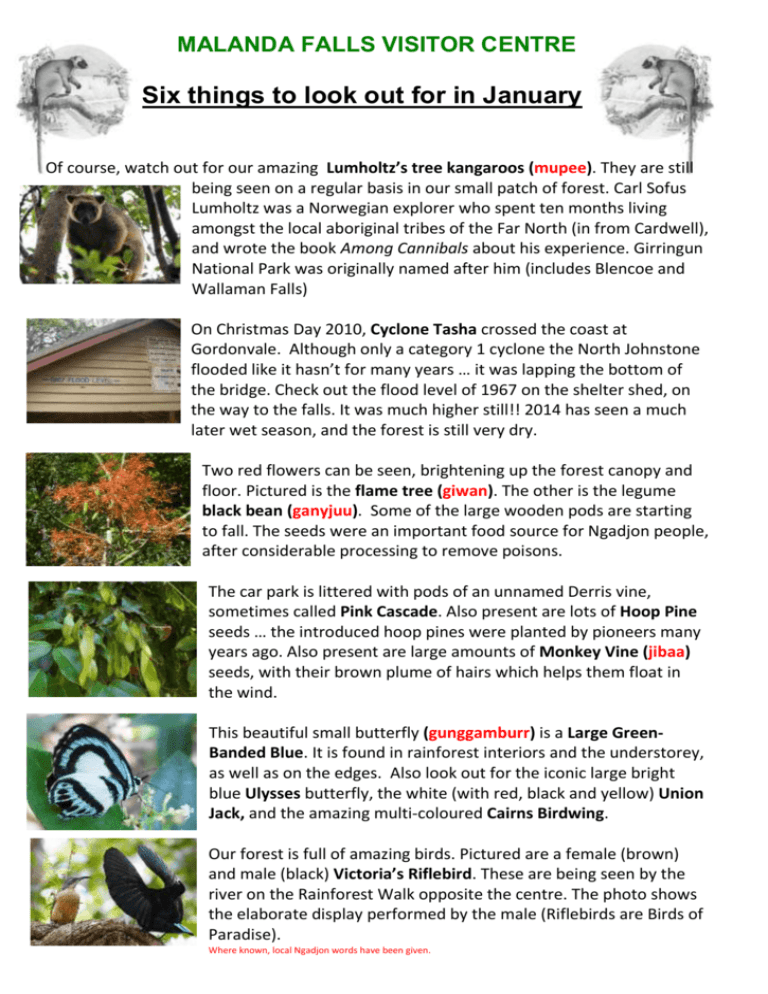
MALANDA FALLS VISITOR CENTRE Six things to look out for in January Of course, watch out for our amazing Lumholtz’s tree kangaroos (mupee). They are still being seen on a regular basis in our small patch of forest. Carl Sofus Lumholtz was a Norwegian explorer who spent ten months living amongst the local aboriginal tribes of the Far North (in from Cardwell), and wrote the book Among Cannibals about his experience. Girringun National Park was originally named after him (includes Blencoe and Wallaman Falls) On Christmas Day 2010, Cyclone Tasha crossed the coast at Gordonvale. Although only a category 1 cyclone the North Johnstone flooded like it hasn’t for many years … it was lapping the bottom of the bridge. Check out the flood level of 1967 on the shelter shed, on the way to the falls. It was much higher still!! 2014 has seen a much later wet season, and the forest is still very dry. Two red flowers can be seen, brightening up the forest canopy and floor. Pictured is the flame tree (giwan). The other is the legume black bean (ganyjuu). Some of the large wooden pods are starting to fall. The seeds were an important food source for Ngadjon people, after considerable processing to remove poisons. The car park is littered with pods of an unnamed Derris vine, sometimes called Pink Cascade. Also present are lots of Hoop Pine seeds … the introduced hoop pines were planted by pioneers many years ago. Also present are large amounts of Monkey Vine (jibaa) seeds, with their brown plume of hairs which helps them float in the wind. This beautiful small butterfly (gunggamburr) is a Large GreenBanded Blue. It is found in rainforest interiors and the understorey, as well as on the edges. Also look out for the iconic large bright blue Ulysses butterfly, the white (with red, black and yellow) Union Jack, and the amazing multi-coloured Cairns Birdwing. Our forest is full of amazing birds. Pictured are a female (brown) and male (black) Victoria’s Riflebird. These are being seen by the river on the Rainforest Walk opposite the centre. The photo shows the elaborate display performed by the male (Riflebirds are Birds of Paradise). Where known, local Ngadjon words have been given.
